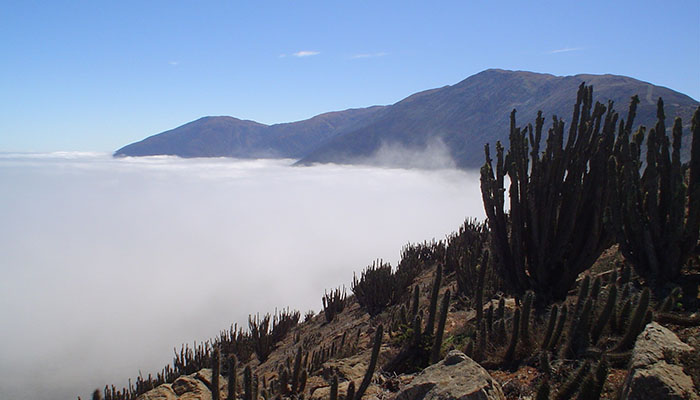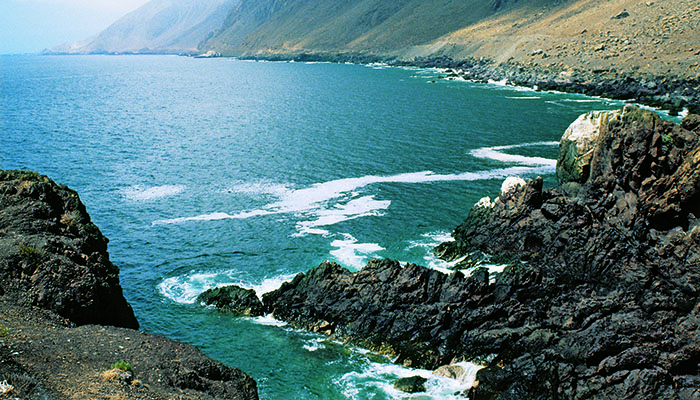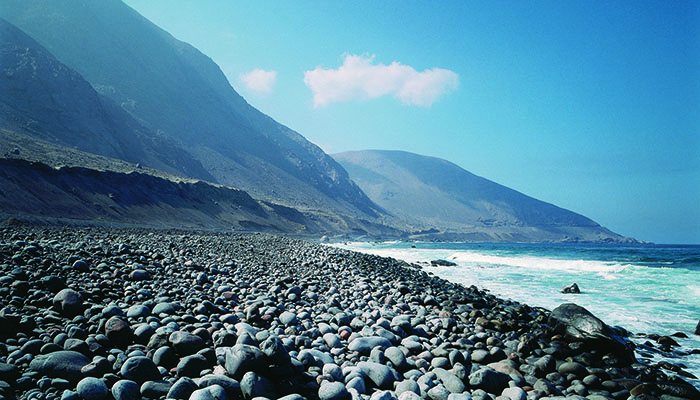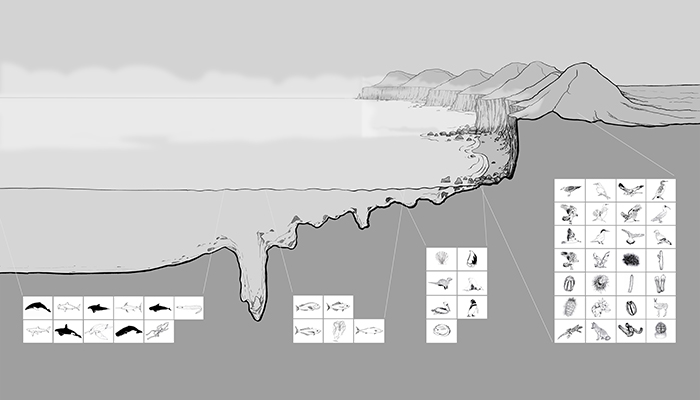Fishermen of the fog: The Changos and their ancestors-2008
Ambient
Chile´s northern coast is a narrow strip of land flanked by the world´s driest desert on the east and its richest ocean on the west.
Cold marine flows brought to the region by the Humboldt Current emerge from the ocean depths to bring nutrient-rich water to the surface, sustaining the highest biomass documented for any current in the western hemisphere. Species found here include fish, cetaceans, sea lions and other marine mammals, as well as a huge variety of mollusks, crustaceans, aquatic birds and seaweed. Half way up the Coastal Range, sits the “camanchaca,” a dense cloud bank that produces a climate with small day-night and temperature variations, high humidity and extremely low rainfall. Waterholes and springs, and even some scant vegetation, are nourished by this coastal fog. On a more or less regular basis, the entry of currents associated with the El Niño Phenomenon from the north causes the disappearance or migration of pelagic species, the death of marine birds that live off these species, an increase in warm water species and, in general, conditions that threaten the very survival of local marine fauna, with obvious effects on local fishing communities.








































